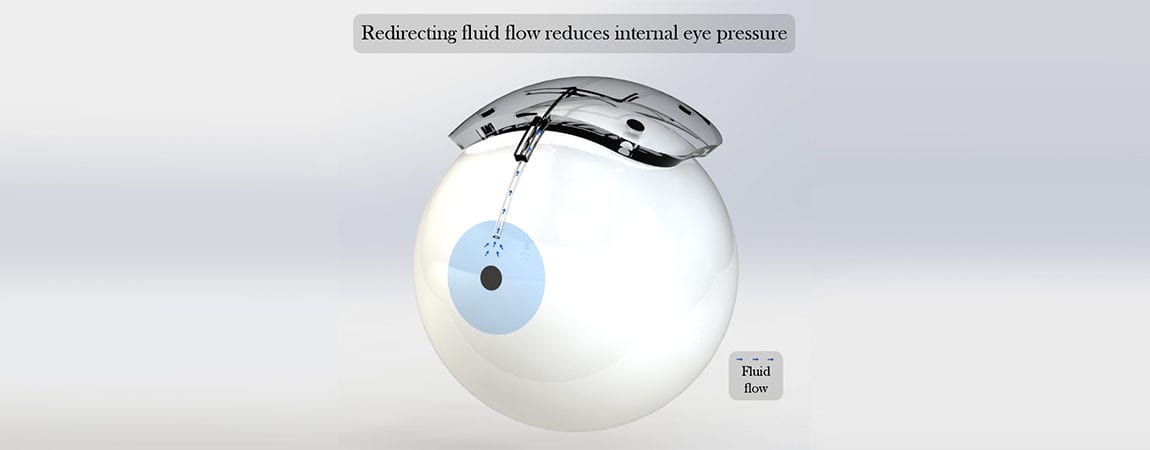Team: Charit Mehta (ME), Aishwarya Pamula (BIOE), Sheila Sharifzad (BIOE)
Advisors: Ying Han (UCSF), Syed Hossainy (BIOE), Dorian Liepmann (ME)
Glaucoma is the second highest cause of blindness worldwide. Affecting over 65 million people, glaucoma is a disease that causes excessive fluid buildup within the eye. Over time, increased pressure inside the eye damages the optic nerve and impairs vision. While no cure exists, several treatment options are used, including medication, laser treatment and surgery.
Tube Shunt Surgery is an effective treatment for severe glaucoma In severe cases, surgeons will lower eye pressure by redirecting fluid into a tube shunt implant. Fluid from the eye will drain into a tube and collect onto the plate sutured to the back of the eye, where it is reabsorbed by the body. Although these devices can initially lower eye pressure, they have a higher rate of failure over time.
Conventional tube shunt devices have several limitations:
- Existing devices are unable to account for the varying resistance to fluid flow before and after scar formation, the body’s immunological response to an implant.
- Commonly used implants cost up to $1,000 each.
- Each device includes only two sizes for all patients.
The I-OPener Tube Shunt is a low-cost (~$20), patient-specific device which accurately regulates intraocular pressure (IOP) using two degradable blockers encased within a microfluidic chamber.
Degradable Blockers:
- Gradually dissolve over time, increasing fluid flow and counteracting resistance created through scar formation
- Polymer concentration and length can be modified, altering the degradation rate to match each patient’s initial pressure
Microfluidic Chamber:
- Multiple channels allow for improved pressure control
- Silicone material is affordable, biocompatible, and easy to manufacture
Project Brief

← View all Capstone Projects





